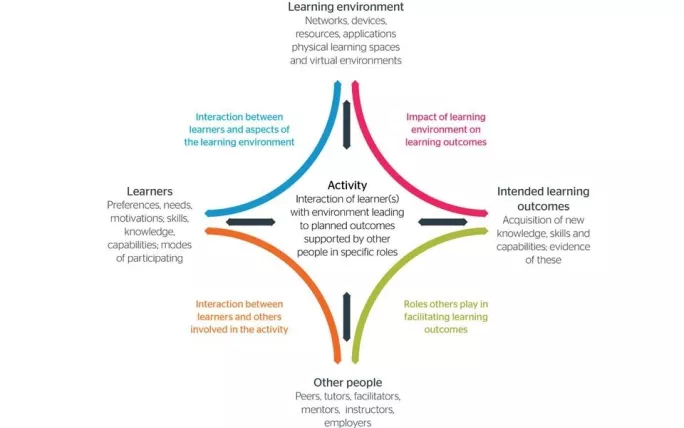When it comes to models of learning for the next academic year, there will be a lot of change. We have already seen varying levels of success in terms of online delivery through lockdown, both for colleges and universities.
This is understandable, given the unprecedented pace at which things have had to change, and the different levels of digital capability already in place. However, one thing that both further and higher education have in common is the need to really think about learning design and its role in the new educational landscape.
More: Ofsted publishes findings of online learning review
Background: How to get blended learning right for September
Revealed: How much online learning FE is delivering
Where are we now?
At the moment, there is a “scale” of online delivery, with institutions using a variety of online models.
There is the first level emergency response, where institutions are continuing to send work to students, whether that’s via email or perhaps a virtual learning environment (VLE). Assignments are set, completed and evaluated, but there is very little opportunity for interaction with peers, and not much chance for engagement.
We have also seen instances where learning has been replicated online, almost like-for-like. Although students are missing out on face-to-face interaction, they still have opportunities to connect with their tutor and peers.
Some institutions will be somewhere between these two extremes, with certain elements of learning better suited to online delivery than others.
All about context
There are three main models for how students may return to learning come September: some campuses may open with social distancing measures in place; some may see learners attending campus for a portion of their learning and engaging with the remaining portion online; and some institutions may continue some courses entirely online.
Essential to each of these approaches are the existing principles of learning design, which guide providers in thinking about four areas:
- Learning environment
What physical and virtual spaces do learners have access to? What devices and resources are available?
- Intended learning outcomes
What knowledge and skills are learners hoping to develop? How will these be evidenced?
- Other people
What role do peers, tutors, facilitators, mentors and employers play in the learning journey?
- Learners
What are the learners’ preferences, needs, motivation, existing skills and knowledge, and modes of participating?
Sharing best practice
Basingstoke College of Technology (BCoT) has exhibited an impressive response to COVID-19 and the resulting lockdown, including pivoting learning design to account for the new context in which learners and staff are operating. As well as being able to base their response on more than five years of a digital transformation journey, the college has adapted to new ways of teaching and learning very quickly.
Because of the blended learning approach the college is likely to adopt, teachers say the learning design is centred on making the most of the time they have with learners, ensuring that when they are physically on campus they are engaging in active, vital lessons and work that doesn’t rely on face-to-face interaction is completed online.
Cardiff and Vale College (CAVC) has also embarked on a journey through learning design during lockdown. The college has adapted its lesson format to account for online delivery, and has placed an extra focus on staff and student wellbeing and safeguarding in the digital space.
Making the most of facetime
It is the human element of learning that has been emphasised during lockdown, lecturers say, and this is something that needs to feed into learning design moving forward.
We can see that there is a shift towards making online learning more collaborative, interactive and engaging, and it all starts with designing learning delivery. Focusing on how online learning will fit into possible campus returns will be vital to ensuring success for the next academic year.
We are living through a context we’ve never seen before, and it’s clear that we can never go back to how things were before Covid-19. This is an opportunity to develop learning, and design will play a crucial role in adapting existing principles to this new context.
Sarah Knight is head of data and digital capability at Jisc



